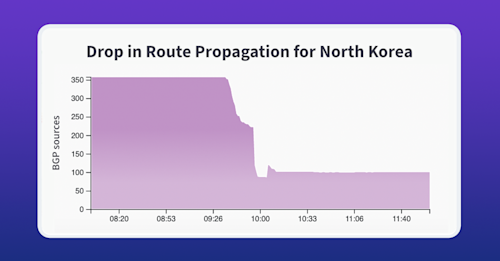Starlink Enters Transit Market With Community Gateways


Summary
Starlink moves beyond being strictly a direct-to-consumer service provider with the recent activations of its Community Gateways. In recent months, Starlink has become a transit provider to a small but growing number of service providers in remote parts of the world as its unique and groundbreaking service continues to evolve.
Starlink, the groundbreaking satellite internet provider, is best known for its direct-to-consumer model: customers sign up for service, set up a dish in their yard, and connect to the internet over a relatively high-bandwidth, low-latency link.
One thing Starlink doesn’t do is provide internet transit to other ISPs — that is, until earlier this year. That’s when Starlink began providing internet transit through its new Community Gateways.

What are Community Gateways?
Unlike individual Starlink user terminals, which serve single households or businesses, Community Gateways deliver fiber-like speeds to a larger area, making them suitable for villages, islands, or rural towns. Let’s explore how they work…
There are over 6,000 Starlink satellites in orbit these days, and each has two types of antennas:
- Ku-band for user access (point-to-multipoint)
- Ka-band for backhaul to gateway earth stations (point-to-point).
The Ku-band antennas generate dozens of spot beams (or “cells”) covering wide areas hundreds of miles across, distributing available spectrum across all beams. In contrast, Ka-band antennas are highly directional, each dedicated to a single gateway, with the full spectrum allocated to that single link – allowing for much higher data rates, but only to one fixed ground location.
Before Starlink introduced inter-satellite links (ISLs), the system operated as a “bent-pipe architecture” where service was only possible when a satellite was within range of a gateway. Starting in 2022, however, Starlink began deploying satellites with laser communication terminals (LCTs), enabling optical inter-satellite links (OISLs) at speeds of up to 100 Gbps. This created a mesh network in space, allowing satellites outside gateway coverage to relay traffic via neighboring satellites.
To enhance performance and leverage idle Ka-band capacity in areas with no gateways, Starlink introduced Community Gateways – a solution for remote regions like the ones featured in this blog post. Here, Ka-band antennas link to the satellite at multi-Gbps speeds, and data is relayed via OISLs to satellites in view of a gateway – in case of Nauru to Australia, where it’s downlinked to a terrestrial gateway and taken to a POP.
Beyond significantly higher throughput, Community Gateways differ from standard Starlink in hardware and cost. They require four large 1.4m parabolic antennas (typically enclosed in radomes), with a combined cost of around $1 million and professional installation required. By contrast, regular Starlink uses a compact flat-panel antenna that can be self-installed in minutes.
Join Doug Madory on April 24 for an in-depth look at the current state of routing security — the progress made and work yet to be done.

First transit customer
In December 2024, the Central Pacific island nation of Nauru unveiled its new Starlink Community Gateway installation. For a cost of $1.25 million (and a monthly recurring fee of $75,000 per Gbps), this new service is expected to begin a new era of high-speed internet service for the 12,000 residents of the world’s third-smallest country.
As was first reported in January by the Megaconstellations X account, the activation of the new service in Nauru was reflected in BGP when Nauruan state-owned Cenpac Net (AS55722) became Starlink’s first customer AS. The BGP visualization below shows a route originated by AS55722 migrating its transit to Starlink (AS14593) beginning at 02:50 UTC on January 12, 2025.

On January 19, Starlink began serving its second-ever transit customer, Telikom (AS152706). At 09:18 UTC on that day, AS14593 began transiting 103.36.150.0/23, the only route originated by AS152706. Telikom (aka Neotel) exclusively uses Starlink for transit and claims to provide Nauru’s first and only nationwide 5G+ network service.
Following the two Nauruan pickups in January, Starlink continued adding transit customers around the world. The Insights function in Kentik Market Intelligence (KMI) tells the story of the next three AS customers – all gained in the past month:

The geographic diversity of these new transit customers reflects the vast reach of the Starlink service: Broadband Systems Corporation (AS37619) of Rwanda in East-Central Africa, Kativik Regional Government (AS400288) of northern Canada, and FSM Telecom (AS58524) serving Micronesia in the western Pacific Ocean, not far from Nauru — well, at least on a map of the world.
Connecting the Great North
Far away from Nauru and just south of the Arctic Circle, the frozen region of Nunavik consists largely of a windswept peninsula that separates the Hudson Bay to the west from the Ungava Bay to the east. Connecting the remote communities that live along the coastline with high-speed internet has been a Canadian strategic priority for many years.

Pictured above, the EAUFON (Eastern Arctic Underwater Fibre Optic Network) submarine cable system was designed to address this need. While the first and second segments have completed installation on the east side of the peninsula, delays have pushed the completion of the third segment of the EAUFON cable into at least 2026.
As a stopgap measure, Kativik Regional Government (KRG) signed a deal last year with Starlink to build a Starlink Community Gateway to become the primary source of high-speed internet until EAUFON 3 is completed.

At 20:25:08 UTC on March 5, we observed a new route originated by the AS of the Tamaani Internet (AS400288), the Kativik Regional Government’s region-wide internet service provider for Nunavik. Pictured below, the prefix, 128.254.234.0/24, is routed exclusively over Starlink.

At 05:38 UTC on March 23, AS400288 began announcing another five prefixes, all of which are exclusively transited by Starlink.
Prior to these recent developments, Starlink (AS14593) only had two customer ASes, and both of them were subsidiary parts of the Starlink network: Starlink (AS27277) and Starshield (AS40714). The screenshot from KMI below shows the AS customers of AS14593 at the time of this writing. BSC is listed at the top because it transits much more IP space through AS14593 than the others.

Major IPv6 deagg
In other Starlink news, earlier this month, we reported on a major BGP routing change for Starlink’s IPv6 routing. IPv6-enabled service came late for the LEO satellite service, and appears to still be evolving. In March this year, we observed a major deaggregation of its IPv6 routes.
Deaggregation (“deagg”) refers to the process of taking larger IP address blocks and breaking them up into smaller announcements.
Over the course of three days, the number of IPv6 prefixes originated by AS14593 jumped by over 300%, while the amount of IPv6 address space (which, due to its size, can only be represented in exponential format) actually decreased by 25%. The transition is depicted in the chart below:

When we delve into the counts of Starlink’s IPv6 routes by prefix length, we better understand the divergence of prefix and address count. The graphic below shows the emergence of a slew of new /40’s (orange) and /42’s (green), preceding the loss of /38’s (blue).

To be precise, the number of IPv6 routes originated by AS14593 went from 165 to 553. The number of /38’s went from 99 to 3, while the counts of /40’s and /42’s went from 8 and 6 to 207 and 274, respectively.
What might be the purpose of this deaggregation? Typically, deaggs are done for traffic engineering purposes. Smaller routes enable finer control of how traffic gets routed. Given Starlink’s earlier slow adoption of IPv6, this may simply be an attempt to bring its IPv6-based service up to date with its IPv4 routing.
Conclusion
How far Starlink can grow as a transit provider will be limited by the capacity of the constellation and the specific geographic locations (remote or rural) where the innovative service can fill a gap. The clever use of idle Ka-band capacity means there are many new locations that could be served concurrently without overwhelming the system.
Now we’re unlikely to see Community Gateways appear in heavily populated areas, so this probably won�’t be a mechanism that can replace capacity lost in a major city due to a submarine cable cut, for example.
Be that as it may, there are many locations around the world that would benefit from Community Gateway connectivity. It may fulfill the dream of SES’s O3b — the only operational medium earth orbit (MEO) satellite internet service — only partially addressed: serving the “Other Three Billion” people of the world without modern internet access.
The only other thought that comes to mind is that the first locations where Community Gateways were deployed had either a submarine cable (AU-Aleutian cable for Unalaska) or were months from receiving one (East Micronesia Cable for Nauru), suggesting that at least for island communities, Starlink offers competitive economics on par with submarine cables — something that wasn’t remotely true with geostationary satellite internet services of the past.
As far as the IPv6 deagg? Starlink was slow to roll out its IPv6 support, so this could simply be some catch-up work. Networks, LEO and otherwise, are regularly re-engineering their routing to optimize for capacity, cost and balancing resources like IP address ranges.
By either token, Starlink is a network that continues to evolve at a rapid pace on multiple fronts — and we’ll be keeping a close eye on how it develops.
Special thanks to friend and satellite communications expert, Christian von der Ropp, for his invaluable input for this blog post.

